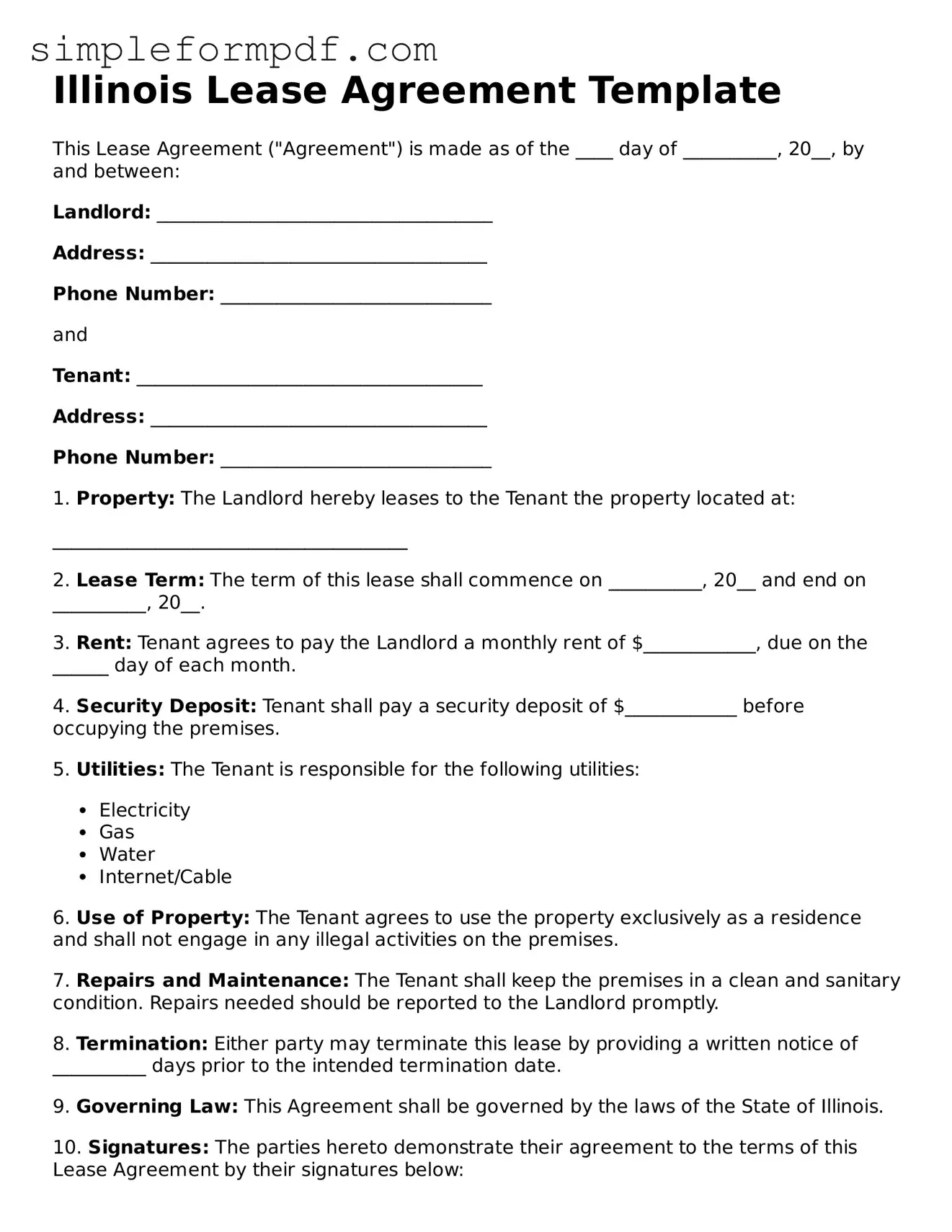Illinois Lease Agreement Template
This Lease Agreement ("Agreement") is made as of the ____ day of __________, 20__, by and between:
Landlord: ____________________________________
Address: ____________________________________
Phone Number: _____________________________
and
Tenant: _____________________________________
Address: ____________________________________
Phone Number: _____________________________
1. Property: The Landlord hereby leases to the Tenant the property located at:
______________________________________
2. Lease Term: The term of this lease shall commence on __________, 20__ and end on __________, 20__.
3. Rent: Tenant agrees to pay the Landlord a monthly rent of $____________, due on the ______ day of each month.
4. Security Deposit: Tenant shall pay a security deposit of $____________ before occupying the premises.
5. Utilities: The Tenant is responsible for the following utilities:
- Electricity
- Gas
- Water
- Internet/Cable
6. Use of Property: The Tenant agrees to use the property exclusively as a residence and shall not engage in any illegal activities on the premises.
7. Repairs and Maintenance: The Tenant shall keep the premises in a clean and sanitary condition. Repairs needed should be reported to the Landlord promptly.
8. Termination: Either party may terminate this lease by providing a written notice of __________ days prior to the intended termination date.
9. Governing Law: This Agreement shall be governed by the laws of the State of Illinois.
10. Signatures: The parties hereto demonstrate their agreement to the terms of this Lease Agreement by their signatures below:
Landlord Signature:__________________ Date:______________
Tenant Signature:____________________ Date:______________
This Lease Agreement template is designed to comply with Illinois state laws and protect the rights of both the Landlord and Tenant.
